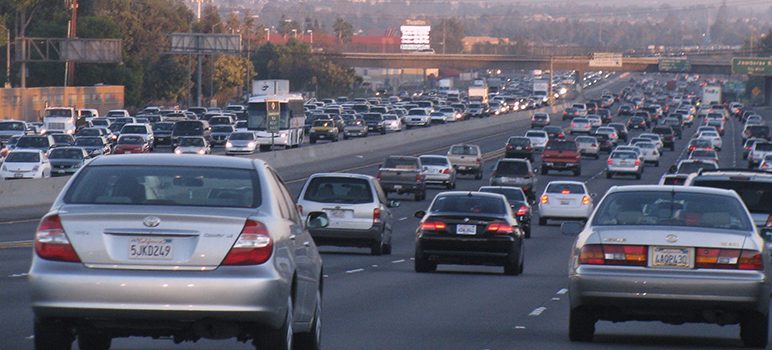As the Covid-19 shelter-in-place orders continue to remain in effect in the Bay Area, in the state of California, and throughout the U.S., one of the few bright spots in this global crisis has been a dramatic reduction in air pollution due to decreases in traffic.
Clearer skies are a testament to this unplanned experiment in the effects of reduced commute driving on our air quality.
One important side effect of this social distancing has been an emerging body of data pointing to the beneficial environmental effects of our new remote work practices—as well as the vital link between air quality and respiratory health.
Heavy traffic had also taken an economic toll on the Bay Area. Before the pandemic, residents experienced some of the longest commute times in the country—more than 100,000 of us spent a combined three hours getting to and from work every day, and average commute times in Silicon Valley rose 25 percent in the last 15 years. The resulting loss of regional productivity is estimated to be as much as $3.4 billion a year.
During this shelter-in-place, many of us have had to learn how to negotiate a brave new world of video conferencing. We have juggled work schedules and at-home children’s needs while still managing to successfully get our jobs done. In many ways, this accommodation to remote work can be viewed as a trial run for a better, healthier future.
Our experience so far has taught us that we are in for a prolonged struggle with this virus. Re-entry to work and social contact will be a three-steps-forward, two-steps back process, as outbreaks continue to subside and then surge again. It’s not a problem that can just be willed away, despite the stubborn efforts of some local and national politicians.
Resiliency and flexibility, not magical thinking, will be the key to coming out safely on the other side of this crisis.
With all this in mind, the Bay Area Air Quality Management District is encouraging businesses to sign the Cut the Commute pledge at www.sparetheair.org and make a commitment to include remote work options for employees as part of their re-entry plans moving forward.
Continuing to offer remote work options can ensure employee safety, save money, and ease the commute burdens and costs on employees, while also extending the air quality benefits of reduced driving. When it comes to remote work practices, the wishes of public health experts and air quality professionals perfectly converge.
We’ve all had to adapt to new circumstances, and this interruption in our routine has given us the chance to reflect on what’s important. It will take time to defeat the virus, but we will, and a key question is what kind of world we want to create once it is safe for us to be together again.
At the air district, one of the vital lessons learned is that the region’s workforce can get the job done while putting substantially fewer gas-powered vehicles on Bay Area roads.
If we continue to extend remote work opportunities to employees, the region can emerge from this challenging time with a cleaner, healthier future than ever before.
As executive officer of the air district, and chair and vice chair of the district’s board of directors, we are honored that this agency is developing new policies and programs—such as this remote work initiative—that can offer lasting improvements to our air quality and environment at this critical juncture in our history.
We are asking all Bay Area companies to sign our Cut the Commute pledge and help us continue to protect our air quality into the future.
Jack Broadbent is the executive officer of the Bay Area Air Quality Management District (BAAQMD). Rod Sinks is the chair and Cindy Chavez is the vice chair of BAAQMD’s board of directors. Opinions are the author’s own and do not necessarily reflect those of San Jose Inside. Send op-ed pitches to
co******@me*******.com
" target="_blank" rel="noopener noreferrer">
co******@me*******.com
.

